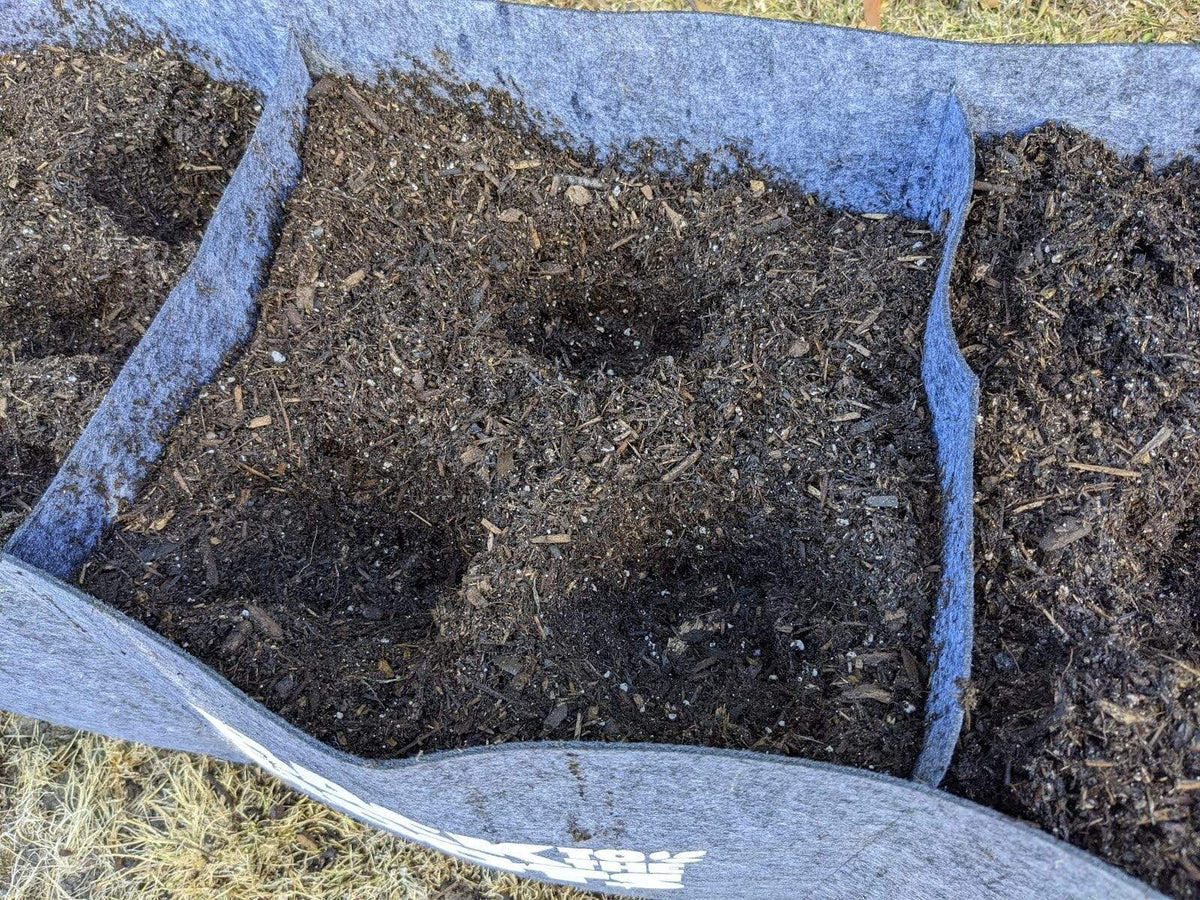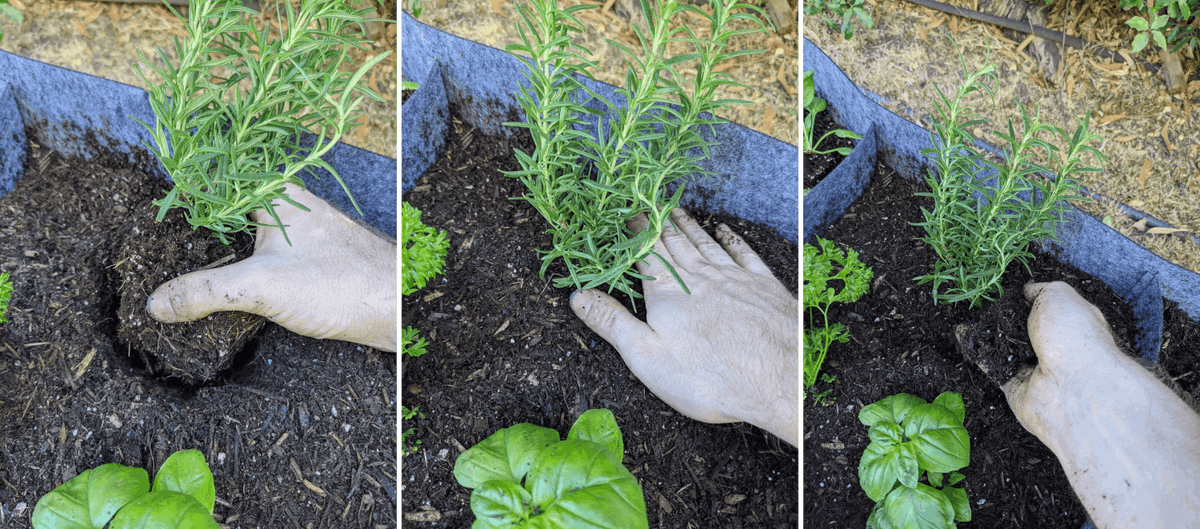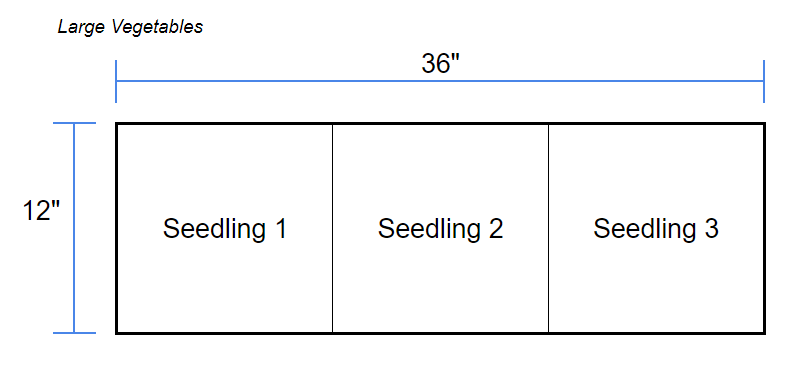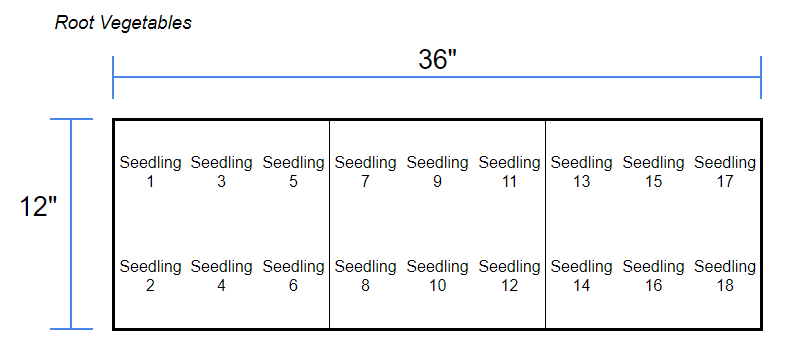FABRIC RAISED GARDEN BED FREQUENTLY ASKED QUESTIONS
Instruction Booklet
Click the image below for a printable PDF of the instruction card.
Have a question that’s not answered here? Reach out to our knowledgeable customer service team and they’ll be happy to help you out!
Transplant Guide
The fastest way to get your new Fabric Raised Garden Bed growing is to transplant pre-grown seedlings into the bed. Transplanting is the process of moving a plant from its temporary container into its permanent place in the garden. Transplanting can be a delicate process, so follow the steps below to get your plants growing properly in their new home!
Step 1: Plan
expand_more
Use Back to the Roots’ Plant Spacing Diagrams to plan out how many seedlings you’ll be adding to your raised bed. This is an Important first step - your plants will need ample room to thrive, and different types can need drastically different amounts of space.
Step 2: Place & Fill
expand_more
Plan to set up your Fabric Raised Garden Bed close to its final location — it will get a little heavy once you fill it with soil! Find a location that matches the lighting and temperature requirements of the plants you plan to grow. And avoid placing the raised bed on sensitive surfaces, as it drains freely. Once you’ve found your final location, unfold the bed and fill each square foot section with soil up to ~2" from the top. This gives plenty of depth for plant roots to thrive, but also leaves a lip of fabric to keep soil from spilling over the top.
Step 3: Water
expand_more
Before transplanting, water your plants thoroughly in their separate containers, and add water to the soil in your Fabric Raised Bed. This ensures your plants have enough moisture to thrive in their new home right from the start.

Step 4: Dig
expand_more
Dig holes for each of your transplants corresponding to your chosen plant spacing diagram from Step 1. Each hole should be slightly wider and deeper than the size of your transplants.

Step 5: Plant
Step 5.1
expand_more
One by one, remove your transplants from their separate containers. Do this by gently squeezing the walls of the container to loosen the roots and soil, then grab the base of the plant stem and carefully remove the plant from the container.

Step 5.2
expand_more
Inspect each transplants’ roots. If roots have begun circling the bottom of their containers and clumping up, loosen them thoroughly with your fingers before planting.

Step 5.3
expand_more
Add your transplants to their pre-dug holes, cover with surrounding soil, and gently press down to firm the soil around your plant.

Step 5.4
expand_more
Use a watering can with a gentle spray nozzle to thoroughly soak the soil. Water will drain out of the fabric raised bed as needed.

Step 5.5
expand_more
Pay special attention to your plants to make sure they are receiving adequate water during the first few weeks after transplanting - they may need more care as they get used to their new home.
Plant Spacing Diagrams
When planting your garden, it’s important to give ample growing space for your herbs, veggies or flowers to thrive. Follow these spacing diagrams to ensure your plants have enough room to grow in your Fabric Raised Garden Bed.
Large Vegetables (Tomatoes, Peppers, Cucumbers, etc.)
expand_more
.

Root Vegetables (Carrots, Radishes, Beets, etc.)
expand_more
.

Large Herbs & Leafy Greens (Basil, Rosemary, Head Lettuce, Kale, etc.)
expand_more
.

Small Herbs or Leafy Greens (Cilantro, Chives, Spinach, Arugula, etc.)
expand_more
.

Large Flowers (Sunflowers, Zinnias, Lavender, Echinacea, etc.)
expand_more
.

Small Flowers (Alyssum, Linaria, Calendula, etc.)
expand_more
.

Have a question that’s not answered here? Reach out to our knowledgeable customer service team and they’ll be happy to help you out!
General FAQ
What plants can I grow in the Fabric Raised Garden Bed?
expand_more
The Fabric Raised Garden Bed is the best home for all different types of plants - including most veggies, herbs and flowers! Check out our handy Plant Spacing Diagrams to see how many of each plant type can fit in your new garden.
Should I grow my plants from seed or use transplants?
expand_more
The Fabric Raised Garden Bed will work with both transplanting as well as growing from seed. To get a jumpstart on your garden, we recommend transplanting in seedlings from your local garden center, but check out our seed packet bundles if you’re looking to grow from seed!
How big is the Fabric Raised Garden Bed?
expand_more
Each square foot section of the Fabric Raised Garden Bed holds over 7 Gallons of soil, with a total capacity of over 22 Gallons!
Is the Fabric Raised Garden Bed Waterproof?
expand_more
The Fabric Raised Garden Bed is tough, sturdy, and long-lasting, but it’s specifically designed not to be waterproof. Most plants grow best when their containers are allowed to freely drain - this prevents root rot and other plant diseases. The strong felt fabric allows both water and air to flow between the outside and inside surfaces, keeping your plants from both drowning and overheating. Be sure to place your raised bed somewhere where it can freely drain and avoid water-sensitive surfaces.
How do I clean my Fabric Raised Garden Bed?
expand_more
Season to season, you may want to clean your fabric raised bed to keep it looking its best. Simply rinse it with water or place it alone in your washing machine on a gentle cycle then let it air dry.
Have a question that’s not answered here? Reach out to our knowledgeable customer service team and they’ll be happy to help you out!

